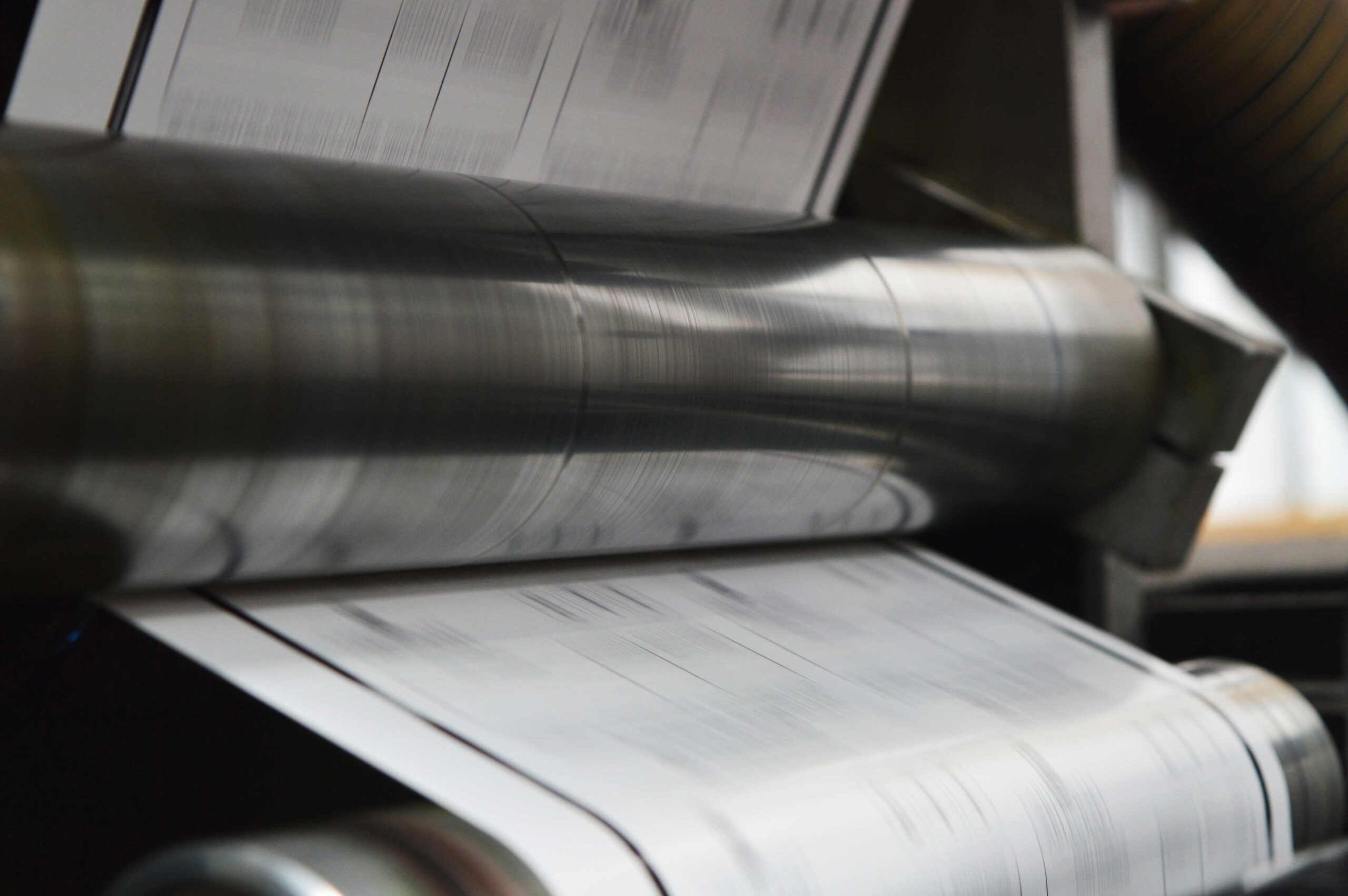Is there a place for traditional print now?
There is no denying that we now live in a digital orientated world; from the latest smart phone to industrial robots in the automotive sector, it has managed to appear throughout our day to day lives. Digital print has become a gigantic sector of the print industry and with how far technology has come there’s no wonder why; but is traditional print like hotfoil, flexographic print, screen printing and pad printing still in demand?
Hotfoil:
Hotfoil which is also known as foil stamping is typically a commercial printing process. It is the application of metallic or pigmented foil on to a solid surface by application of a heated dye onto foil. This process uses a metal plate that has been engraved with a design, the plate then strikes the material that is being printed, this makes it adhere permanently to the product below leaving the design of the dye. There are many pros of printing with hotfoil; it is fully customisable, as well as a huge range of coloured foils to choose from, there are also different effects that can be added.
Flexographic Print:
Flexographic print is known as the modern version of letterpress printing. Flexo printing uses flexible photo-polymer printing plates that are wrapped around rotating cylinders on a web press. The inked plates have a slightly raised image and rotate at high speeds to transfer the image to the substrate. Flexo uses quick drying, semi-liquid inks. In the digital age, flexography holds its own in the areas of larger orders, particularly of packing products and labeling. Extremely high press speeds are one of the advantages, all printing, varnishing, laminating and die cutting is done in a single pass.
Screen Printing:
Screen printing is a process of forcing ink on a surface through a prepared screen of fine material to create a picture or pattern. The most common type of screen printing is clothing, like printed t-shirts, but it can be used for industrial purposes. The main advantage of screen printing is the durability; because of the thickness of the inks used, it can withstand far more stress than others without losing any quality of the print. Another benefit is that it can produce vibrant colours that are hard to replicate with other printing techniques, finding another method as versatile as screen printing is also very difficult to do. It can be done on almost any surface as long as it is flat, fabric, wood, plastic and even metal, as well as many others. A disadvantage is that the more colours in a design the more money it will be; this is because a screen has to be created for each colour.
Pad Printing:
Pad printing also known as tampography, is a printing process that can transfer a 2D image on to a 3D object. From the simplest single colour number or logo printed onto a medical instrument, through to a 4 colour image on to a promotional item. One of the advantages to this process is that you can print on to a three dimensional object with curved or odd surfaces and still achieve a good quality print, this is because of the unique properties of the silicone pad. One of the disadvantages to tampography is that speed isn’t one of its strongest points, you do have to apply different colours separately which does take time but there is also a possibility that the registration could then become off.
Digital Printing:
Digital printing has taken the print world by storm with its vast printing techniques, speed and how cost effective it is. Modern printing methods like ink-jet printing and laser are what is known as digital printing. What it entails is a picture is sent directly to the printer using PDF files and programmes like Photoshop, Illustrator and InDesign; doing this eliminates the need for expensive printing plates which will save money and time. Without the need for printing plates, this process has brought about quick lead times and printing on demand. At this moment in time digital print does have its struggles. Despite it constantly improving, they still can’t match the colour quality of traditional print.
In summary, traditional printing is great for printing large quantities as well as jobs that require exact colour matching and different materials. Digital printing, however, is perfect for small quantity jobs that have a short lead time. So there is definitely still a place for traditional print.



